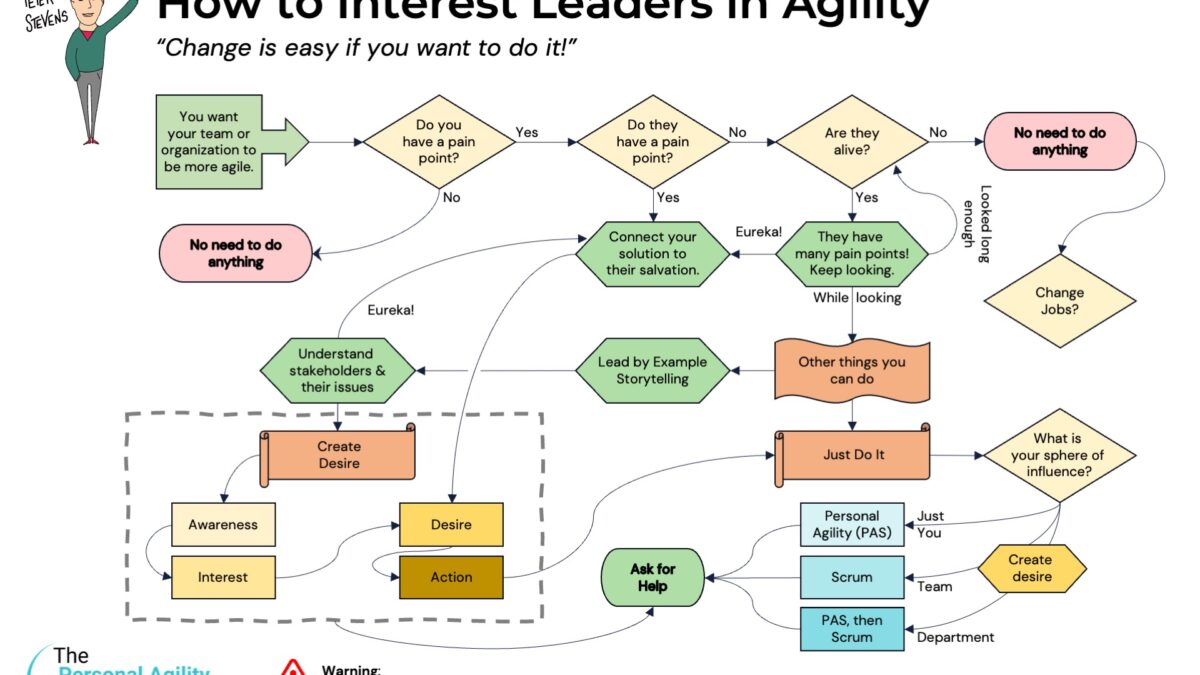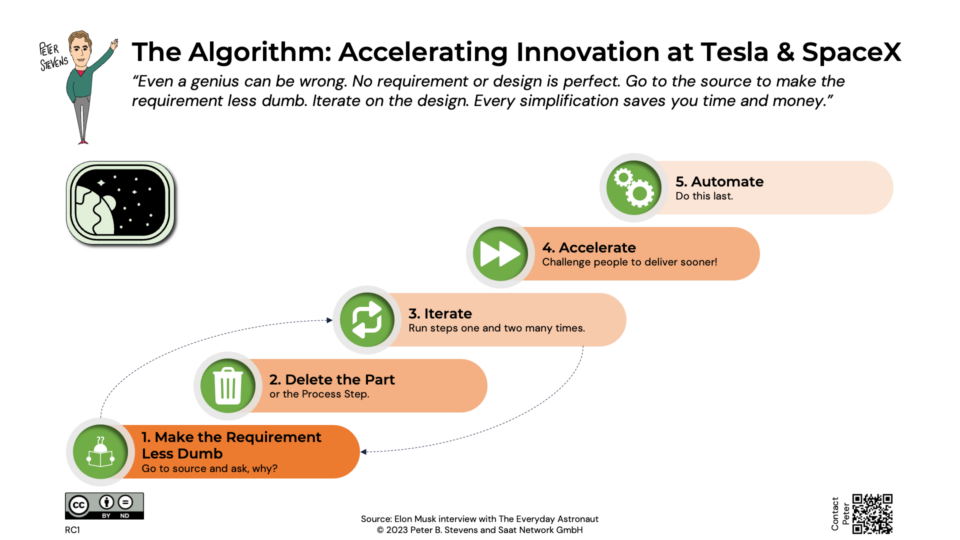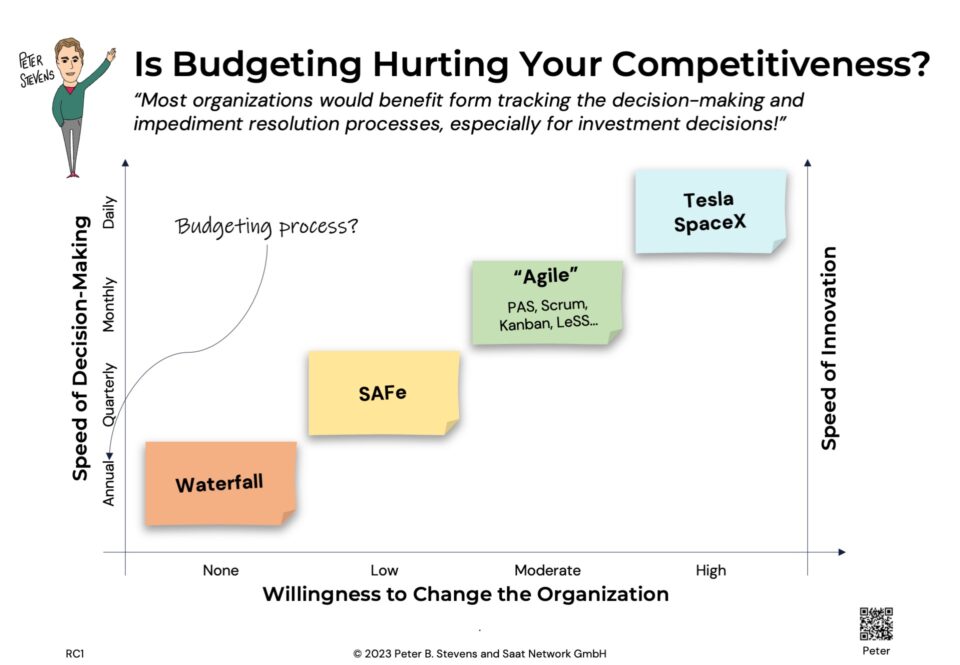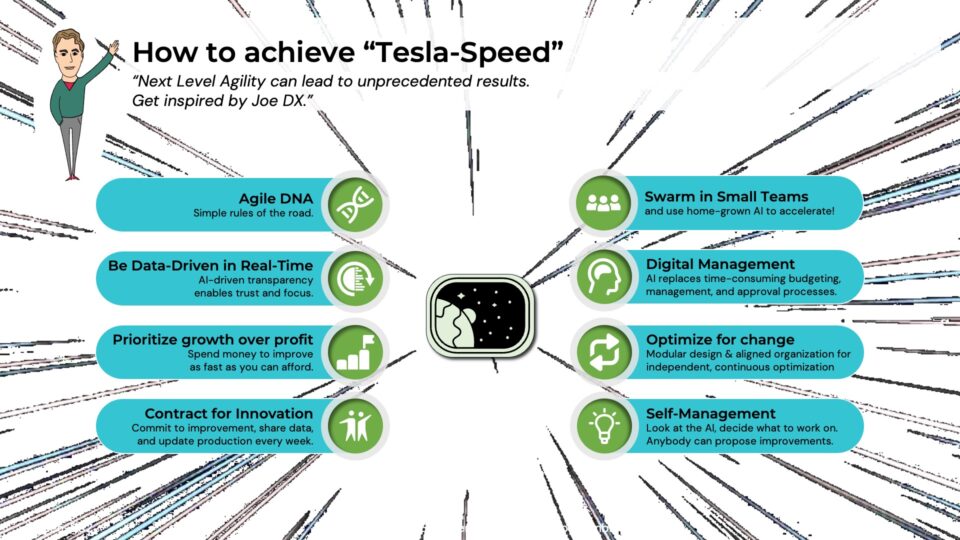
10 Warning Signs of Procrastination
22-08-2023
Who is Accountable for what in Scrum?
04-09-2023I am probably going to get in trouble for this post. Everyone says change is hard, and nothing seems harder than getting leaders to pay attention to agility. I disagree. Change is easy if you want to do it.
I have experienced it myself, and you have too. People change themselves all the time, because they experience life and discover things they want to do. If you want others to change, just help them discover that they want the change. The basic process is easy:
- Find their pain points
- Connect their pain points to your solution
- Take Action: Commit to getting started ASAP
Although this is easy, it may entail attentive listening to your stakeholders, and you may have to iterate on their problems before you find the one that enables you to move forward.
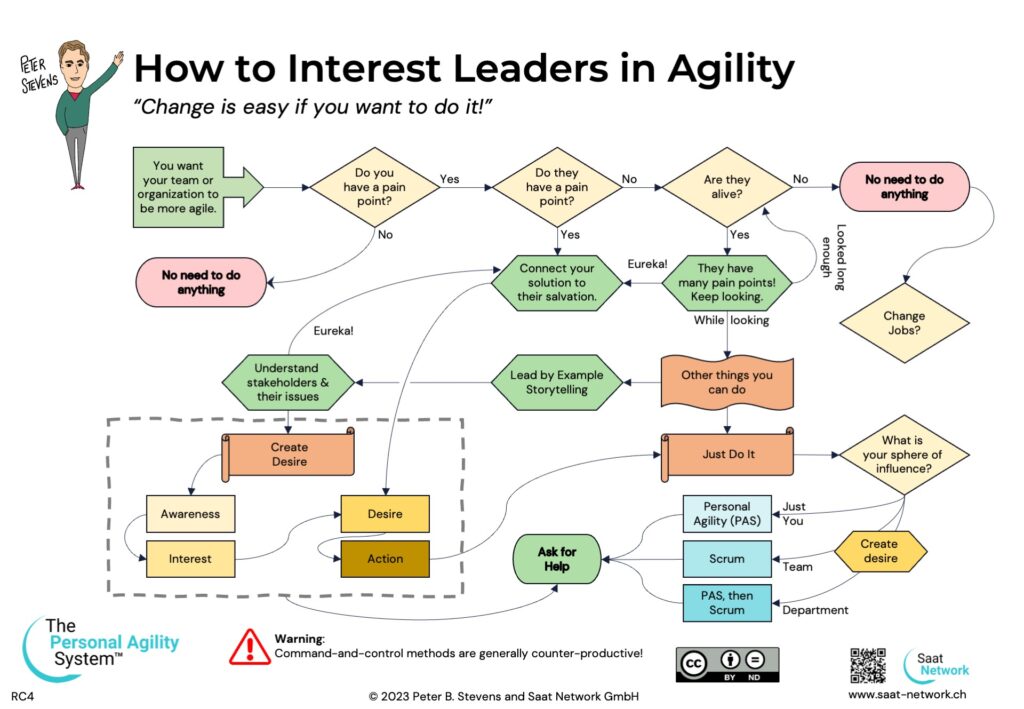
Both the pursuit of pleasure and the elimination of pain can be motivations to change. For some reason, identifying and dealing with pain seems to be more the driving factor in deciding to act. Looking at Steve Denning’s film “The Agile of Agile”, you might think “We’re going to die” is the only legitimate reason for change at the organizational level, because all of the case studies involved the fear of death.
Start with your own pain point. If you don’t have one, you probably have little incentive to change and are unlikely to convince others. Even if you do, others may or may not care about your pain, so it is usually better if you can identify their pain points and connect your objective with alleviating their pain.
The easiest way to identify pain points is to simply ask the people involved, then listen carefully and help them understand their own issues. It is remarkably similar to coaching, which is why dialogue plays such a fundamental role in Personal Agility. The PAS Stakeholder Canvas will help you interview a stakeholder to help you and them understand their issues.
Accepting a new idea is a process. The marketing industry calls it AIDA:
- Awareness
- Interest
- Desire
- Action
You can use the same patterns, first to build awareness that there is a problem, then create desire to solve it with your solution. Share videos. Invite speakers. Form communities of practice to identify and discuss issues. As people become aware of the problem, they start to want a solution. This is where leadership storytelling is a powerful tool. Done well, it calls up a “Yes, and” response as people start to see themselves and their future in your story.
These change patterns build on the notion that the people involved get to decide. Command-and-control approaches do not work well for leading change. These methods provoke something like the grief response to major bad news, which causes resistance to the change.
You can change yourself right away. All it takes is a decision. (Seeing it through to the end is another challenge for another post). To get anyone else to change, the path of least resistance passes through desire.
What are the pain points that get your stakeholders moving? What are the attractive destinations that they want to move to? Understanding your stakeholders can be the first step to catalyzing a change.

